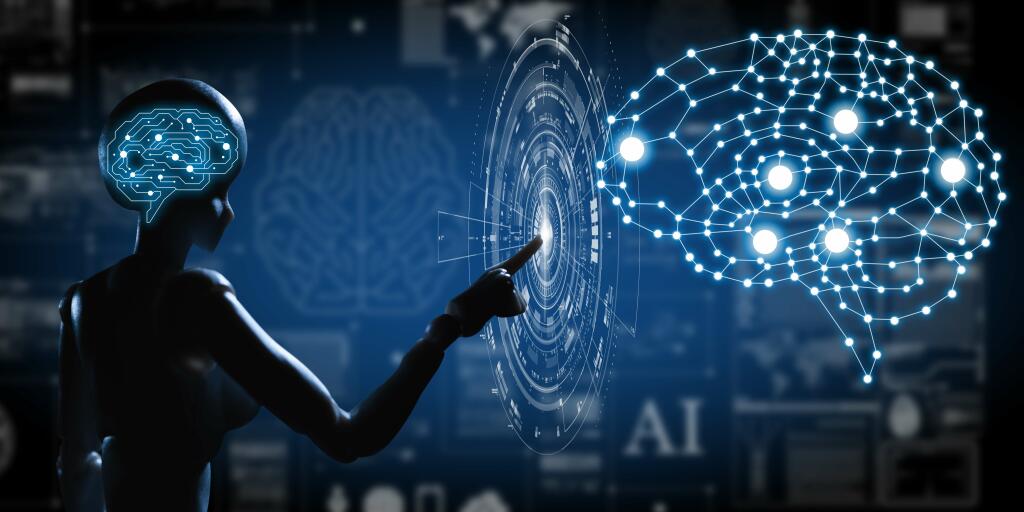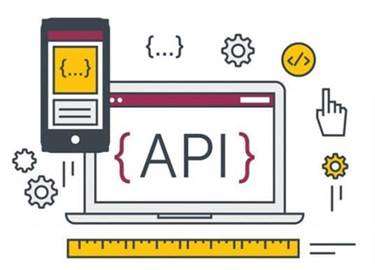A single edge deployment merely isn’t sufficient to handle such a load, so fog computing can operate a sequence of fog node deployments inside the scope of the surroundings to gather, process and analyze data. In traditional enterprise computing, information is produced at a shopper endpoint, corresponding to a user’s pc. That knowledge is moved across a WAN such because the internet, by way of the corporate LAN, the place the info is saved and labored upon by an enterprise utility. This stays a confirmed and time-tested strategy to client-server computing for commonest business purposes. When considering edge computing safety, you need the same level of security and service visibility that is included in a central knowledge heart.

This puts information, compute, storage, and applications nearer to the consumer or IoT system the place the data needs processing, thus creating a fog exterior the centralized cloud and reducing the data switch instances essential to course of knowledge. Currently, monitoring gadgets (e.g. glucose displays, health instruments and other sensors) are either not connected, or the place they are, giant quantities of unprocessed knowledge from devices would must be saved on a 3rd get together cloud. Edge computing—or just “edge”— moves pc storage and processing (now typically simply known as “compute”) to the edge of the network. This is where it’s closest to customers and devices and most critically, as close as attainable to data sources.
Associated Capabilities
Some examples embrace retail environments the place video surveillance of the showroom ground may be mixed with actual sales knowledge to determine the most fascinating product configuration or client demand. Other examples involve predictive analytics that may information equipment maintenance and repair before actual defects or failures happen. Still other examples are often aligned with utilities, corresponding to water therapy or electrical energy generation, to guarantee that equipment is functioning correctly and to keep up the quality of output. Find a vendor with a proven multicloud platform and a comprehensive portfolio of companies designed to extend scalability, speed up efficiency and strengthen safety in your edge deployments. Ask your vendor about extended companies that maximize intelligence and efficiency on the edge.
Edge computing’s decentralized nature means one compromised edge gadget doesn’t have an effect on knowledge on all other units. Extra security measures can also be implemented instantly on edge gadgets like firewalls or intrusion detection systems. These days, there’s a good probability that every thing from the light bulb in your kitchen to the automotive in your garage is “connected.” That never-ending — and always-increasing — stream of data processing jobs means heavy pressure on information centers. Edge computing eases that burden by transferring a number of the processing closer to its point of origin — as shut as attainable to where the action occurs. “The complete level of edge computing is to get nearer to gadgets, to minimize back the quantity of data that must be moved around for latency reasons, to get closer in order that responses are sooner,” stated Matt Trifiro, chief marketing officer at Vapor IO.
While the development of edge computing is rife with challenges, none seems to be something resembling an existential menace — particularly considering the imminent tsunami of forthcoming know-how. Edge computing is an emerging ecosystem of assets, functions, and use cases, including 5G and IoT. Data lifecycles check with when data is saved and the way lengthy it ought to be saved for reporting purposes before being deleted or archived for future use. This improves resilience in your system and ensures that your utility continues working even when there are issues within the network or with individual servers.
Remote Reliability
Edge computing does the compute work on site — typically on the edge gadget itself — such as water quality sensors on water purifiers in distant villages, and may save data to transmit to a central point solely when connectivity is on the market. By processing knowledge locally, the amount of data to be despatched may be vastly reduced, requiring far much less bandwidth or connectivity time than might in any other case be necessary. Edge computing happens at or close to the physical location of customers or information sources.

Edge software providers scale back the volumes of data that should be moved, the resultant site visitors, and the gap that information must travel. Edge computing is a distributed computing framework that brings enterprise applications nearer to information sources such as IoT units or native edge servers. This proximity to information at its supply can deliver robust enterprise benefits, together with faster insights, improved response instances and higher bandwidth availability. Akamai Edge Platform is a cloud service that gives a world community of servers for content supply and acceleration.
What’s An Instance Of Edge Computing?
That makes it tough for organizations to understand what’s occurring with their property in real-time. Open source platforms ensure interoperability across a wide ecosystem, with out the seller lock-in of a proprietary technology stack. And to allow new edge computing use instances, Red Hat is investing in upstream open supply communities like Kubernetes, OpenStack, and Fedora IoT. But sending, receiving, and analyzing knowledge along with IoT applications is a extra fashionable strategy made possible by edge computing. Retailers can provide a superior buyer expertise, stop theft and higher manage their inventories and supply chains.

This forms a decentralized knowledge infrastructure where information isn’t stored multi function place, versus the centralized infrastructure used within the cloud. With edge computing, the primary aim is to process information on the actual location, or as shut as attainable, to the place it’s being created and used. To accomplish this, data is processed right exterior of a core network (which encompasses the web and IP technologies) on the community edge, the area the place units and native servers hook up with and communicate with the internet.
Explore Taikun Cloudworks In 2 Minutes!
Each time a device wants to communicate with a remote server, there is a delay. By avoiding the necessity to communicate with that remote server, edge computing achieves a lot lower latency. As superior as digital tech gets, hardware stubbornly remains beholden to bodily conditions. Examples embrace the fan in your laptop computer or complicated chilled water or oil techniques in large-scale knowledge facilities. To that end, Vapor IO designed its server racks as cylinders rather than rectangles to be able to optimize airflow. It additionally added a number of sensors, screens and air redirects to maintain ideal temperatures.
- While 5G technology can deal with more capability than 4G, it can’t transmit terabytes of information to the cloud for processing at the speed wanted to ensure secure autonomous driving.
- Additionally, it could limit service failures to a smaller area or person inhabitants, or provide a level of service continuity regardless of intermittent community connectivity.
- Edge computing permits you to profit from the massive quantity of information created by linked IoT devices.
- Healthcare providers process and retailer huge amounts of knowledge from many sources, corresponding to medical units positioned in doctor’s workplaces, hospitals, and consumer wearables.
Cloud and edge computing are very totally different strategies for distributing software program and knowledge. They each have their benefits and disadvantages, making it troublesome to choose between them. Instead of preserving issues far off within the “cloud,” it brings the action closer to you.
Discover the most effective edge monetisation alternatives, understand the important thing companions, and inform your go-to-market strategy through our Edge Use Case Directory right here. Edge unlocks useful information to form definition of edge computing new opportunities and innovation for the future. Network modernization can yield higher enterprise resiliency and cost efficiency, making a ripple impact of innovation.
Data’s journey across national and regional boundaries can pose further problems for information security, privateness and other legal issues. Edge computing can be utilized to keep information near its supply and throughout the bounds of prevailing information sovereignty laws, such as the European Union’s GDPR, which defines how information ought to be stored, processed and uncovered. This can permit uncooked data to be processed regionally, obscuring or securing any sensitive data earlier than sending anything to the cloud or main data heart, which can be in different jurisdictions. Banks might need edge to research ATM video feeds in real-time so as to increase shopper security. Mining companies can use their knowledge to optimize their operations, enhance worker safety, cut back energy consumption and increase productivity.

Additionally, the sting computing environment should be sturdy enough to withstand technological change and simple sufficient to be upgraded over time. The Internet of Things (IoT) refers again to the strategy of connecting bodily objects to the Internet. IoT refers to a physical system or hardware system that sends and receives information over a community with out human intervention. A typical IoT system works by continuously sending, receiving, and analyzing information in a suggestions loop. Analytics may be performed by people or synthetic intelligence and machine studying (AI/ML) algorithms in near real-time, or in batches over an extended time frame.
This can reduce bandwidth usage, particularly when transmitting giant quantities of information. An edge on the hospital website might process knowledge regionally to maintain knowledge privateness. Edge also permits right-time notifications to practitioners of surprising patient tendencies or behaviours (through analytics/AI), and creation of 360-degree view patient dashboards for full visibility. Edge computing helps by bringing the processing and storage of information closer to the gear. This permits IoT sensors to monitor machine well being with low latencies and carry out analytics in real-time.
The edge community is the part of an enterprise network that connects directly to the Internet. It includes the core community and a set of routers, switches, and other devices closer to finish customers than the core network. Sensors and IoT gadgets linked to an edge platform in factories, crops and workplaces are getting used to watch power use and analyse their consumption in real-time.
The distributed computing mannequin isn’t new and the ideas of distant places of work, department places of work, information heart hosting, and cloud computing have been around for a really lengthy time. However, decentralization could be difficult and requires a excessive stage of supervision and management. This is usually overlooked when moving away from conventional centralized computing models. Edge computing is the practice of placing computing, information storage and application assets closer to information sources (like IoT units or local databases and servers). Reducing the physical proximity between these entities reduces information latency and speeds up total community performance. In some circumstances, connecting an finish gadget directly to the internet is impossible or economically viable.

This could enhance car reaction instances and cut back accidents, as well as hold car operations up when offline or in a rural space, making for safer travel. Some business watchers consider the cloud will at some point be used largely for storage and big computations. Major improvements that are now taking off, like IoT, AI and high-tech farming also lean on the edge.
With real-time visibility, enterprises and vitality corporations can strike new offers, for instance where high-powered equipment is run throughout off-peak instances for electrical energy demand. This can improve the quantity of green vitality (like wind power) an enterprise consumes. Edge computing is a precedence for lots of telco service providers as they modernize their networks and search new sources of revenue. IIoT stands for Industrial Internet of Things, a term for connected gadgets in manufacturing, energy, and different industrial practices. IIoT is important for bringing more automation and self-monitoring to industrial machines, helping improve efficiency. This can be seen in the proliferation of compute, storage and network appliance products particularly designed for edge computing.